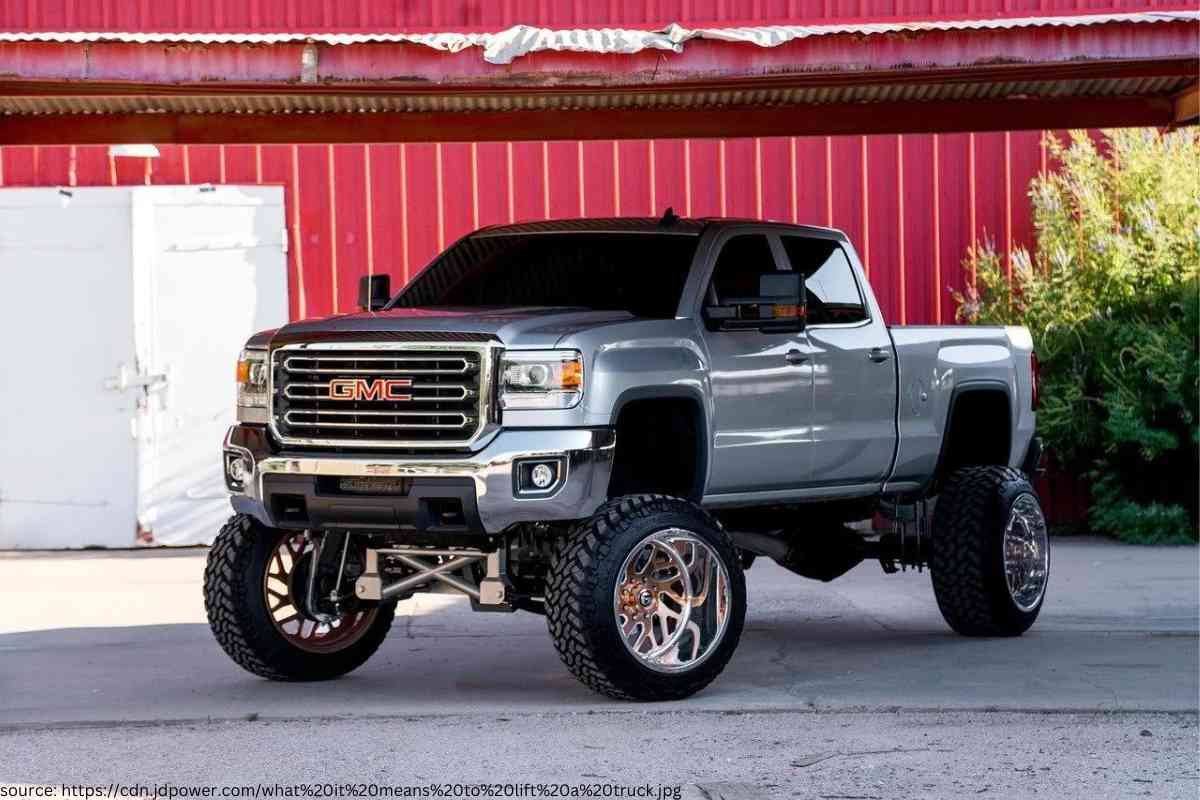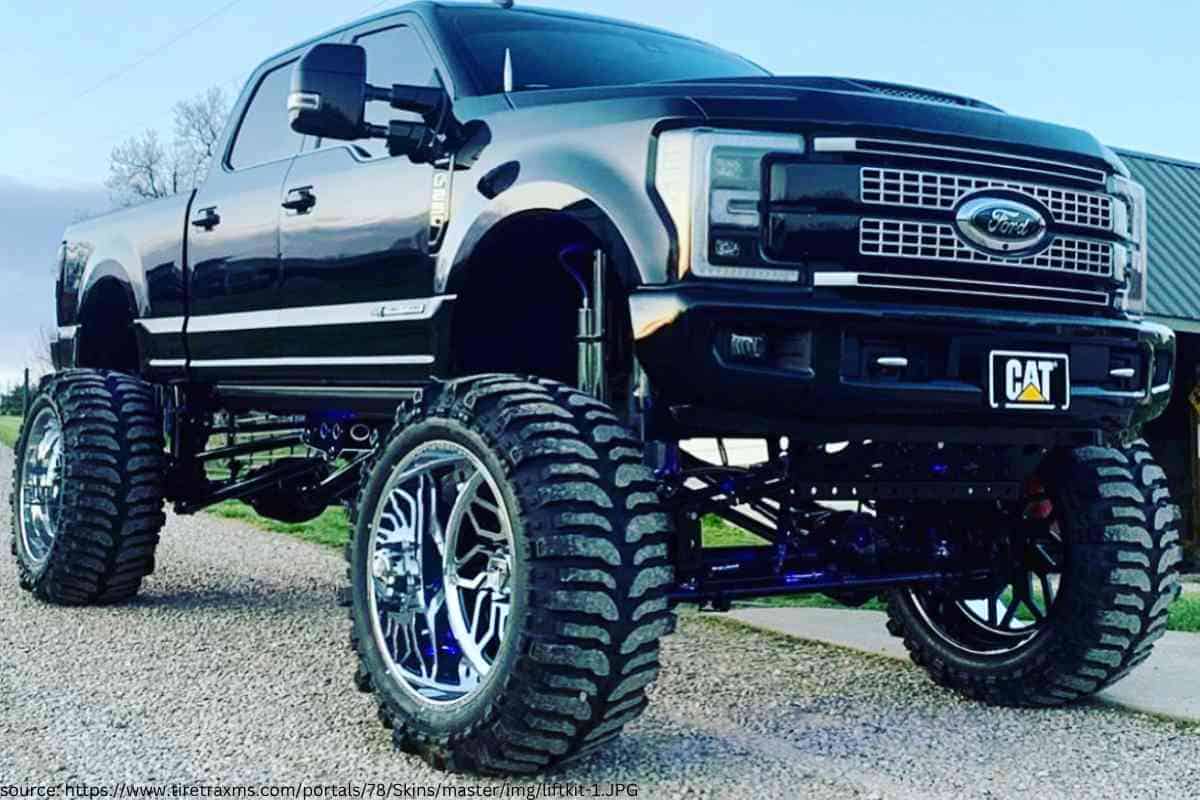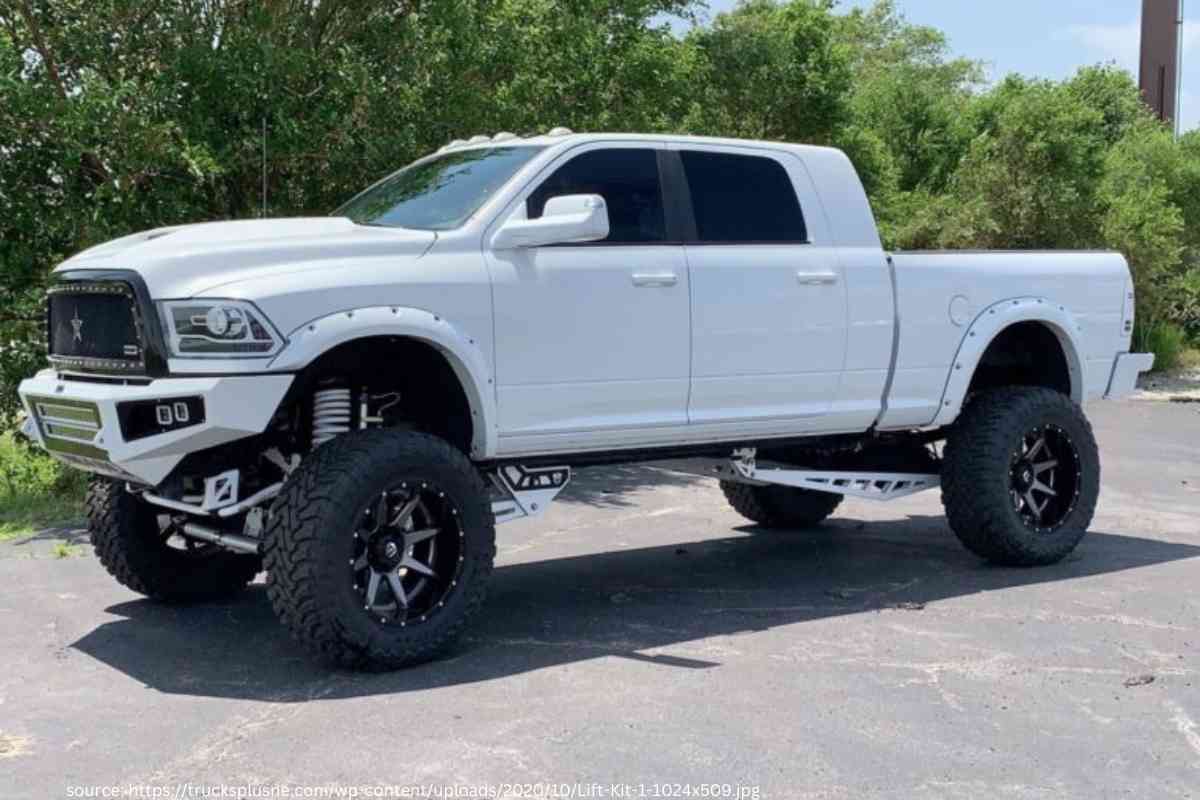Are Lift Kits Bad For Your Truck? Pros & Cons Explained!

You’ve been thinking about it for a while now, and it’s time to decide whether you will fit a lift kit into your truck. Everyone else is doing it, so why not? Plus, no matter what your ride is, it will look awesome, plus you’ll see some massive benefits while off-roading.
A lift kit is one of the most popular modifications to your truck. Since it’s one of the easiest, many owners take it as a DIY project.
Are lift kits bad?
Lift kits provide increased ground clearance, making it easier to navigate challenging terrain. They can improve off-road performance by enhancing angles of attack, departure, and breakover. Lift kits also enhance the truck’s appearance and visibility. However, there are drawbacks, including reduced stability, increased wear and tear on components, decreased fuel economy, and the cost of installation.
There are many pros and cons regarding lift kits, and it’s ideal to know them all before you dish out a lot of money for one of them. In fact, there’s an ongoing debate as to whether installing them implies more cons than pros.
This article won’t tell you whether it’s good or bad. Instead, we’re giving you all the possible pros and cons. This way, you can make the most informed decision regarding your ride.
Pros of lift kits for trucks
Increased ground clearance
The most popular reason people install lift kits is for additional ground clearance. The fact that the truck’s frame is lifted higher means there’s less risk of damaging it when facing challenging terrain.
Plus, the engine and other vital components are safer from water, should you cross a river or body of water.
Added ground clearance also helps the tires have longer travel. In combination with an improved suspension, a lift kit can improve a truck’s offroad capability considerably, with a warning.
It’s common for people to say that a lift kit makes vehicles better in offroad terrain, and that’s not necessarily true.
Lifting the body will provide more clearance, but without better tires and other extras, it won’t guarantee improved offroad performance.
That being said, lifting the body is essential if you want better handling in tough terrain.
Why does a lift kit improve a truck’s offroad performance?

A common question is why a lift kit improves a truck’s offroad performance and the answer circles back to angles of attack, departure, and breakover.
An attack angle affects your truck entering a rut or a steep hill. The front tires need the highest grade possible to avoid rubbing the front of the vehicle. A lift kit lifts the front and separates the front tires and the body.
The same happens for angles of departure. This measurement refers to the truck’s clearance when exiting challenging terrain. If this angle isn’t enough, the vehicle’s rear can rub off, possibly damaging the exhaust system and other essential components.
Breakover angles are also essential for off-roading. These refer to the clearance between the vehicle’s center and the terrain.
There are cases of unfortunate drivers teetering on top of a rock, and this happens because there wasn’t enough clearance between the vehicle and a boulder or a rut.
Getting stuck in such a position isn’t a pleasant experience, so having clearance is vital.
A lift kit can help you improve in all these angles by lifting the body, but not only that.
By having more ground clearance, and more space between the axles and the body, you can fit bigger tires, thus improving traction.
Better looks
Lift kits also improve how your truck looks. Few things look cooler than a lifted truck with big wheels.
The great thing about a lift kit is that it’s not only for those who love off-roading; anyone can install one in their trucks just because they want to. So if you want to stand out, that’s the way.
More visibility
The higher your truck, the more you can see. It might seem obvious, but it’s also one of the biggest surprises drivers get after installing a lift kit.
The improvement in visibility can be surprising, and most drivers end up loving it, as it can help them see obstacles better down the road.
Installing a lift kit has many positive aspects, but that’s not to say it’s perfect. Unfortunately, there are some drawbacks, and some of them can be pretty serious.
Cons of lift kit for trucks
Reduced stability
When you lift a vehicle, you’ll inevitably shift its center of gravity higher than it was designed for.
This means that there’s more mass concentrated at a higher point than before, and that mass could lead to rollovers and accidents.
While it may seem obvious, it’s important to note that the higher the lift kit, the more unstable the vehicle.
So, if you’re going for a 1-inch or 2-inch lift, you shouldn’t expect a considerable change in handling, but when you enter the 3-inch or 5-inch range, the truck will feel different.
Lift kits affect handling the most in two areas. The first is steep inclines, as lateral force can pull the center of gravity down, causing a rollover, regardless of speed.
We’ve all seen videos of people off-roading who flip their truck over because it was too high off the ground.
The second, and perhaps, most critical, is emergency handling. When at speed, vehicles with lift kits will have a higher risk of rolling over when trying to avoid obstacles. So, if you lift your truck, it’s essential to keep this in mind.
Wear and tear
Sometimes, lift kits don’t require significant changes, instead relying on factory components but putting more strain on them.
When this happens, steering, suspension, and brakes wear out faster.
While this isn’t an immediate danger, being unaware of faster wear could lead to a damaged component and a possible accident.
Reduced fuel economy
A lift kit could increase fuel consumption because of two things.
First, if you lift your truck, you will likely install bigger tires, which weigh more. More weight means more fuel.
At the same time, the vehicle sits higher on the road, facing more wind resistance. So, the engine makes more effort to move through it, increasing fuel economy.

Share Your Insights With US
Did we forget something, get something right (or wrong)? We’d love to hear your insights! Share your automotive experiences based on our article in the comments below. Your input enriches our community’s knowledge. Thanks in advance for sharing!
Cost
Finally, there’s one aspect that’s both a pro and a con: cost.
The great thing about lift kits is that they’re so popular that you can find them for almost all budgets, so you can start out small. If you eventually want to add height, you can adjust your budget as you go along.
The downside to this is that, no matter what you want to do, you will have to invest in getting one, and this can mean anything from hundreds to thousands of dollars, primarily because you want to get the best components you can buy.
When modifying your vehicle, having the highest quality possible is ideal to ensure a good, safe time.
Related Reading
- Why Are Body Lifts Bad?
- Are Lift Kits Bad For Your Truck?
- Does Lifting a Truck Affect Towing, Payload, or MPG?
- Should I Lift My Truck 4 or 6-Inches?
- Do Lift Kits Affect Miles Per Gallon?
- Do Lift Kits Void A Warranty? Jeep, Chevy, Ford, Ram, Toyota
- What is the Difference Between a Lift Kit and Leveling Kit?
- Is It Okay to Lift a 2WD Truck?
- Can You Lift A Truck With Just Shocks?
Closing thoughts
Lift kits are one of the most popular modifications you can fit into your truck. Plus, it’s one of the easiest ways to start modifying your ride, and, at the same time, it looks great, with improved performance.
In addition, the added ground clearance will surely come in handy when navigating rugged terrain. Plus, since they’re so popular, you can find one that fits your budget.
At the same time, lift kits also come with a series of disadvantages that you should consider to avoid any accidents.
For example, your truck will have a higher center of gravity, making it more unstable at high speeds or steep banking angles. So, whenever you’re lifting your vehicle, keep this in mind.
As with any other modification, lift kits will change your vehicle’s behavior for good and bad.
So, if you’re considering installing one of these, we hope this article provides you with the necessary input to make the best decision possible.

It was a very good article. Only thing after reading your article. I probably won’t get my truck lifted. I’ll probably just let it stay stock even though I love the way a 6 inch lift lifted truck looks. Great article. Thanks.